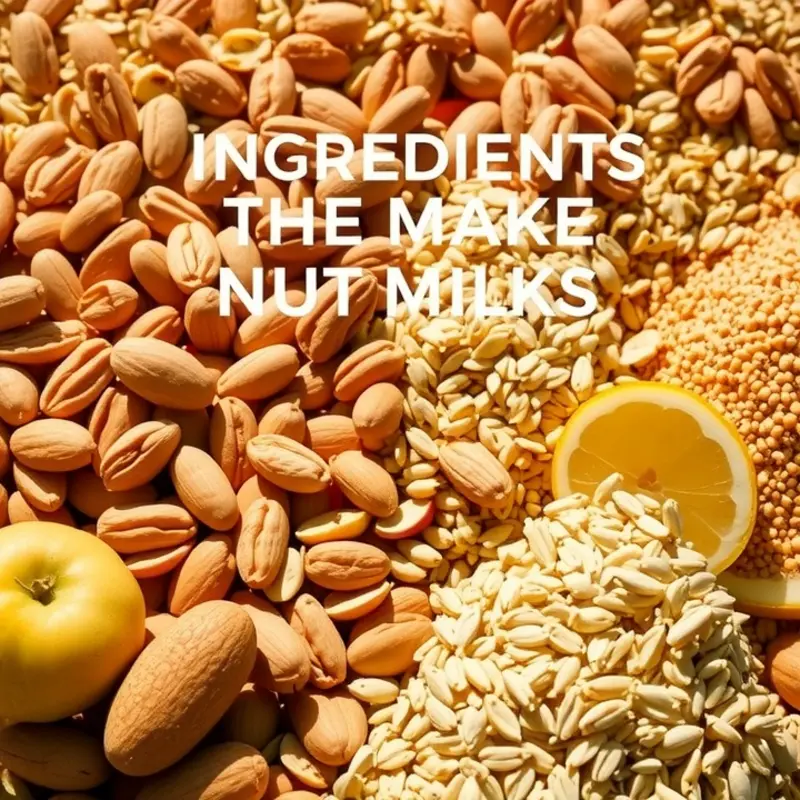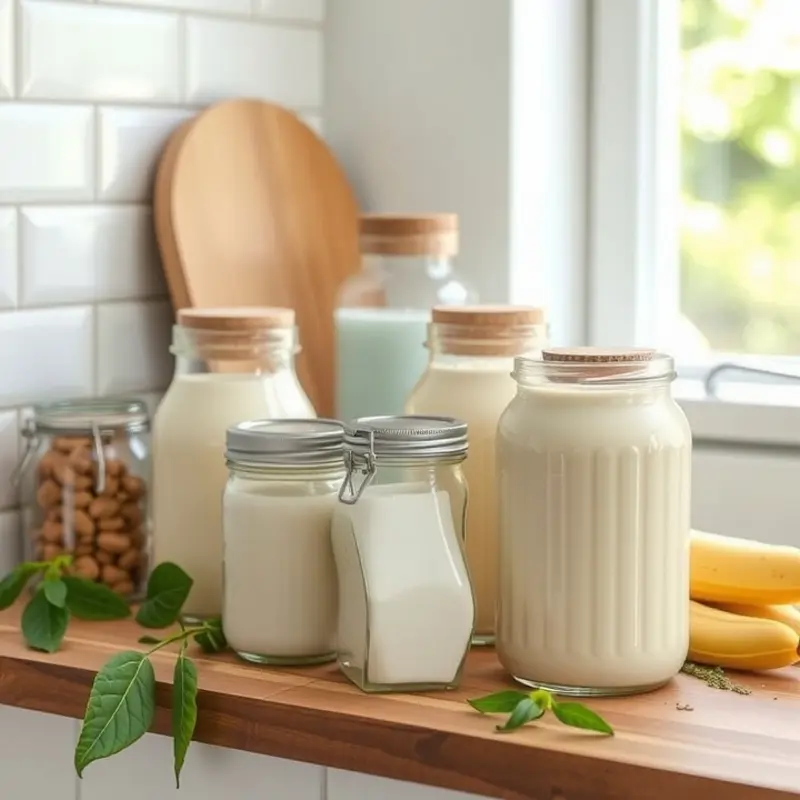Nut milks have gained immense popularity as dairy alternatives, but many are unsure how to store them properly. Understanding the shelf-life of various nut milks and their storage requirements can help minimize waste and maximize their freshness. This guide will provide you with practical tips on storing nut milks effectively, whether they are store-bought or homemade, ensuring you can enjoy these nutritious beverages longer.
Understanding Nut Milk Shelf-Life

In a landscape where plant-based alternatives are thriving, nut milks have gained prominence in many households. Understanding their shelf life is crucial to both ensure freshness and minimize food waste. Various nut milks, from almond to cashew, pistachio to macadamia, have unique properties that influence how long they stay fresh, whether stored in your pantry, fridge, or freezer.
Commercially produced nut milks typically have a longer shelf life than their homemade counterparts. Most store-bought varieties come with added stabilizers and preservatives, allowing them to last in a pantry unopened for about 6 to 12 months. Once opened, these commercial nut milks generally require refrigeration and are best if consumed within 7 to 10 days to maintain optimal quality. The inclusion of preservatives, as well as pasteurization processes, extend the usability compared to homemade options.
In contrast, homemade nut milks lack preservatives, making them more perishable. Most homemade nut milks should be stored in the refrigerator and used within 3 to 5 days. This shorter shelf life is a result of the raw, unadulterated nature of the product, which, while healthier and free of additives, requires more careful planning to consume before spoilage occurs.
Various factors influence the shelf life of nut milks, including temperature, exposure to light, and contamination. Refrigeration is crucial for maintaining the integrity of nut milks since warmer temperatures accelerate spoilage by promoting bacterial growth. Storing nut milks in opaque containers can also prevent light-induced degradation of nutrients.
Cross-contamination is another crucial consideration. Nut milks exposed to outside contaminants, such as from utensils or direct hand contact, can spoil quickly. Always ensure containers are sealed tightly and utensils are clean. To mitigate the risks of spoilage, explore eco-smart kitchen storage solutions to optimize your nut milk shelf life while being environmentally conscious. You can find more on storage best practices here.
When evaluating if nut milks are still good, appearance, smell, and taste are your best indicators. Separation in homemade nut milks is normal and can often be resolved by shaking, but any off-putting odors or unusual textures mean it’s time to discard. Similarly, sour taste is a clear sign of spoilage.
By embracing methods that extend the freshness of nut milks, such as refrigeration and mindful storage, you can enjoy these plant-based staples at their best. Understanding the factors influencing shelf life helps in making informed decisions about storage and consumption, effectively reducing food waste while enjoying your favorite nut milk varieties.
Maximizing Freshness with Proper Storage Techniques

To ensure that your nut milks retain their freshness, it is crucial to understand proper storage techniques. The environment in which your nut milk resides can dramatically affect its shelf-life and quality. Paying attention to temperature, container choices, and guidelines for freezing can maximize not just longevity, but also the delightful taste and texture of your nut milks.
Temperature Control
One of the most critical factors in storing nut milks is temperature. Both opened and unopened nut milks should be kept at a consistent, cool temperature. Ideally, they need to be stored in a refrigerator set between 35°F and 40°F. Variation in temperature, such as placing the milk in the refrigerator door, can lead to faster spoilage. Always choose the main body of the fridge, preferably the back where temperatures remain constant.
Container Choices
The container can make a significant difference in preserving freshness. Nut milks are often sold in cartons that are designed to protect them from light exposure, which can degrade quality. Once opened, transfer leftovers to an airtight glass container if possible. Glass helps in keeping unwanted odors at bay and allows for better cold retention, further extending the milk’s usability.
Best Practices for Freezing
Freezing nut milks is an efficient way to extend their shelf-life. To freeze, pour your nut milk into an airtight container, leaving some space at the top to allow it to expand. Avoid using thin plastic containers, as they can crack in low temperatures. When ready to use, thaw the milk in the refrigerator and shake well before consuming. However, be aware that the texture might change post-freezing, becoming slightly grainier. Despite this, the nutritional value remains intact, making freezing a practical option.
Waste Reduction Insights
By understanding these storage nuances, you can not only keep your nut milks fresh but also contribute to reducing food waste. Implementing these techniques can help you be more conscious about consumption, minimizing waste and possibly even decreasing your kitchen’s environmental footprint. For additional tips on waste reduction, consider visiting our low waste cooking and prep guide.
Effective storage of nut milks involves a blend of temperature control, container optimization, and strategic freezing. By integrating these practices into your routine, you preserve not only the quality and taste but also contribute positively towards eco-friendly living. Maximizing freshness with proper storage is a simple yet effective way to ensure you’re enjoying the best your nut milks have to offer.
Final words
Properly understanding and storing nut milks can dramatically improve their longevity, ensuring you can enjoy their creamy goodness without compromising on freshness. By recognizing the differences in various types of nut milks and employing effective storage solutions, you can significantly reduce food waste. Remember to store opened containers in the refrigerator, and consider freezing unused portions if you won’t use them immediately. Arm yourself with knowledge about nut milk shelf-life, and you’ll save money while enjoying nutritious beverages fully.







